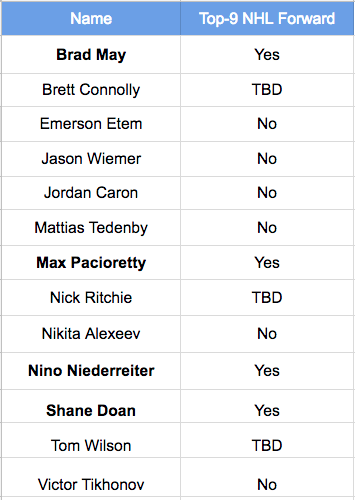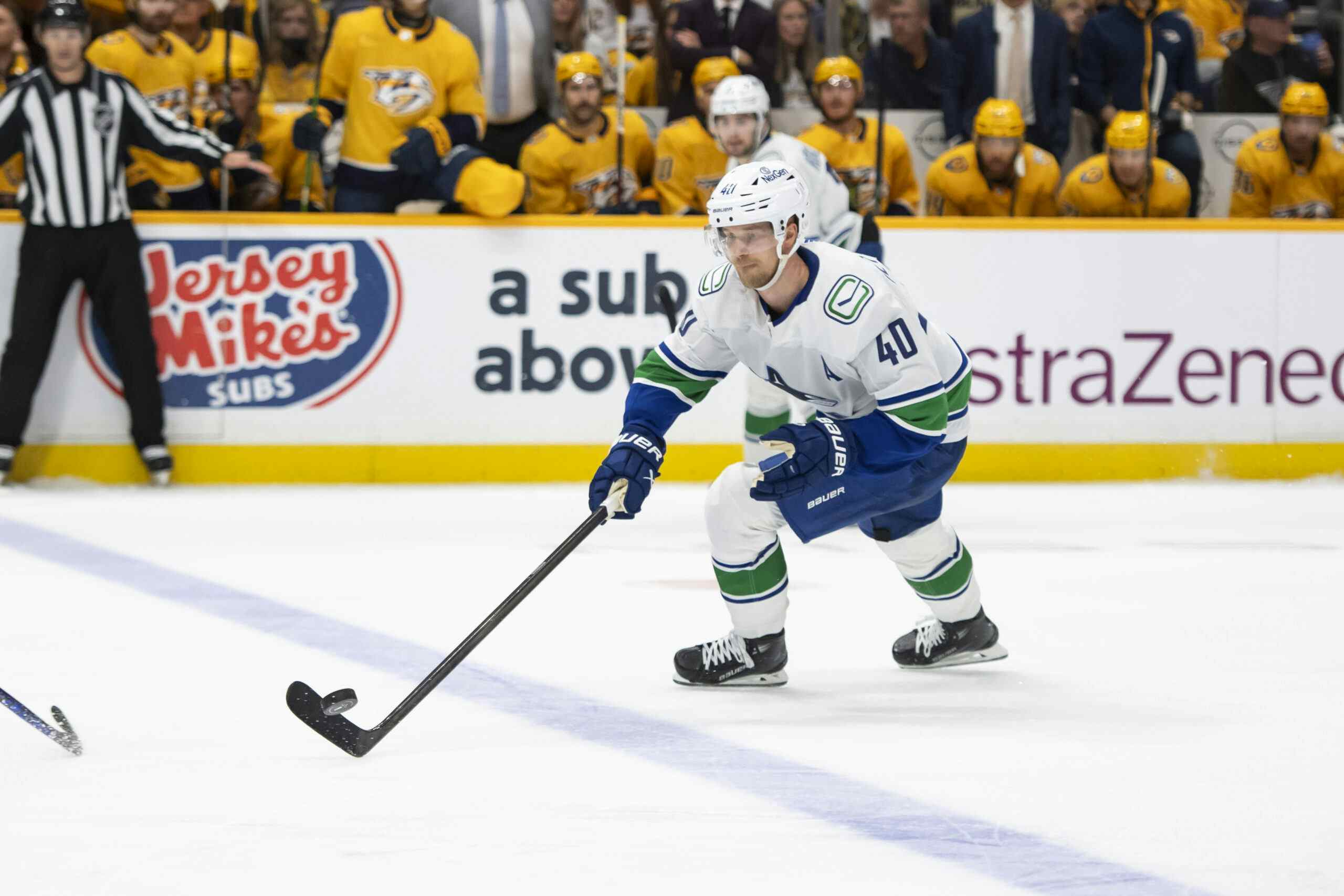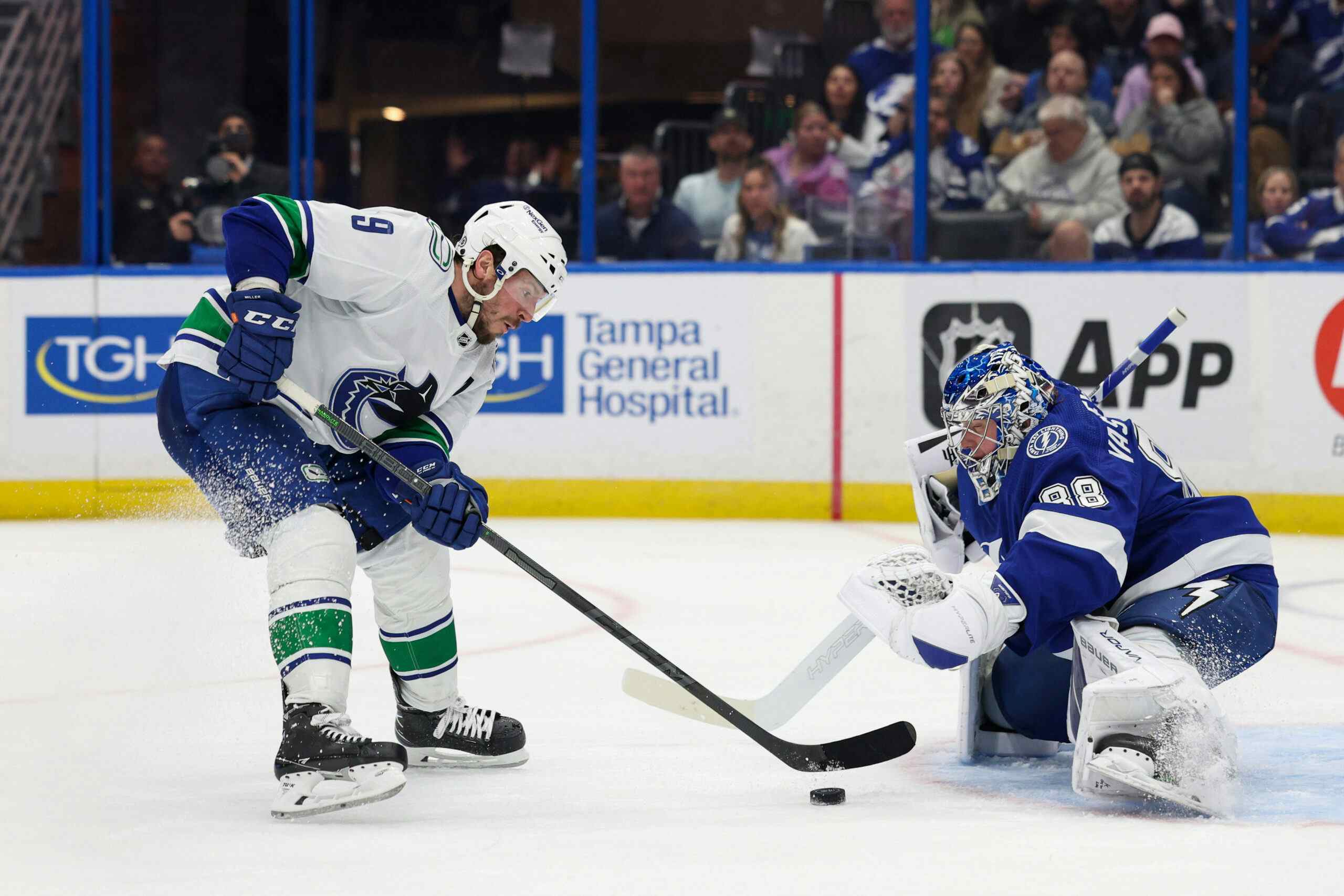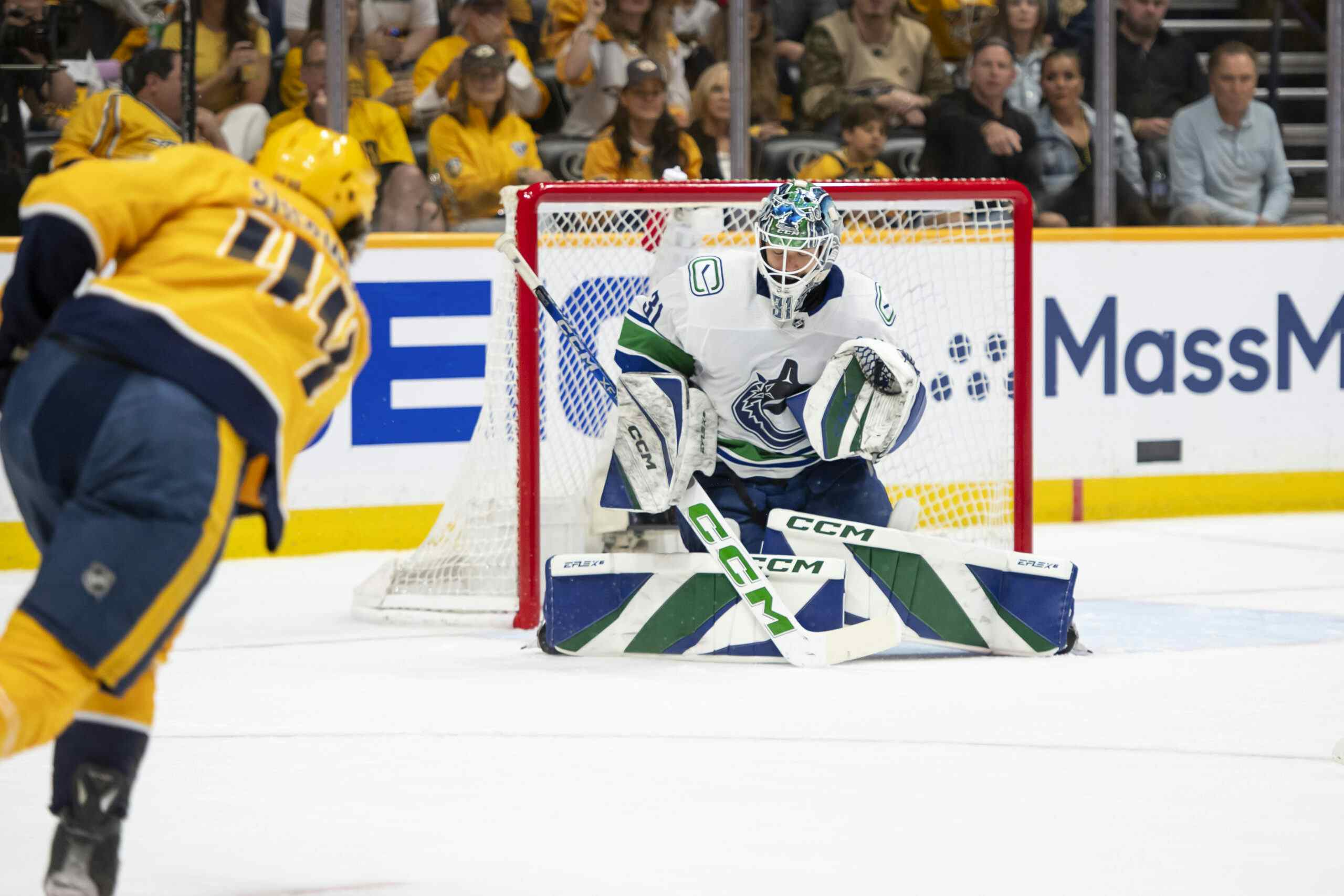Analyzing the Odds of Jake Virtanen Developing Into a Top-9 Forward

By Harman Dayal
5 years agoThe free-agency frenzy has long passed with the Canucks emerging once more as active players.
All in all, the team committed just shy of $8-million in annual average value and multi-year commitments for three depth players. The problem? While each of their signings provides varying degrees of grit and defensive acumen, none of them can be relied upon to generate offence.
It’s an issue because three of Vancouver’s top-five scorers from the 2017/18 season opted for greener pastures this offseason. The retirement of both Sedins has coupled with Thomas Vanek’s departure to the Red Wings to leave a void to the tune of 146 points. With these holes comes increased opportunity — something Canucks general manager Jim Benning expects the young players to take advantage of.
“We’ve drafted some real good, young skilled players and we want to give those players a chance to play in the skilled positions on the team,” Benning told reporters following July 1st’s signings.
Elias Pettersson obviously fits that criteria, but beyond him, there aren’t many young forwards with realistic chances to make the team given its logjam up front.
For next season, it’s going to be up to the likes of Sven Baertschi, Brendan Leipsic and Nikolay Goldobin to bear the responsibility of stepping up to produce in some of these vacated offensive positions. A commonly forgotten name that should be a part of that group is former sixth overall pick, Jake Virtanen.
The 21-year-old winger bounced back reasonably well this year after a dismal showing in the preceding campaign under Willie Desjardins. Virtanen’s performance this season solidified his floor as a legitimate NHL player — proving that he has the physical traits to be an effective forechecker that can tilt the shot clock in the right direction for his team.
But what’s Virtanen’s ceiling at this point? What are the odds that he can develop into a top-nine forward?
If one were to lean on the “eye test,” the answer would depend entirely on the game one caught him in. There are nights when he flashes the coveted combination of size and speed that drove his high selection, but there are almost just as many contests where his poor hockey sense has him lost on the ice. And while there are signs that he’s improving his consistency under head coach Travis Green, the tangible results belie progression seemingly apparent to the visible eye.

While stats are by no means the be all end all for player evaluation, they’re particularly useful for mapping a player’s potential career path by pitting one’s production against historical comparables. Here at CanucksArmy, this sort of analysis is typically conducted with draft-eligible prospects using Jeremy Davis’s pGPS system, but thanks to Hockey Reference’s database we can conduct a similar study using NHL players. Today, the focus is finding historical comparables for Jake Virtanen to establish a precedence for his odds of developing into a bonafide top-9 forward.
Criteria
There were a few key elements that I wanted to include in my search in addition to just point production. Here are the criteria I settled on when looking at comparable forwards since the 1990-91 NHL season.
- First-round picks
- At least 6-foot-1 and 195 pounds(stature data pulled from Elite Prospects)
Draft position was important because I only wanted to include players that were seen as owning high upside and talent when evaluated as junior players. Size is included because power forwards like Virtanen are often thought to take longer to adapt to the NHL playstyle after years of dominating in junior because of a physical advantage.
After that, I adjusted for age, NHL production and position.
- Cumulative 0.14-0.3 P/GP from ages 18-21 or 0.19-0.29 P/GP in their age 21 season
- Minimum 60 NHL games played between ages 18 and 21
- Winger
- February 1st used as age cut-off for a season
The Comparables
Searching by the criteria above yielded 13 matches for Virtanen.

There are some intriguing names on this list, so let’s break down some of these comparables.
Successful Top-Nine Forwards(4/10, 40%)
After excluding active players that are still establishing themselves, we’re left with ten comparables. Within that cohort, four of them went on to become bonafide top-nine forwards. For the purposes of this article, players were deemed successful by this label if they had at least four seasons in which they contributed at least 23 points.
23 points sound awfully low, but that’s the benchmark set for third line production from right wingers by this 2011 quasi-study. The article purposely doesn’t take injuries into account, so 23 points are the raw standard, as opposed to what one may expect over a full 82 games.
Three of Virtanen’s comparables cleared this benchmark quite easily, while Brad May met the criteria with five seasons in which he scored more than 23 points.

It’s easy to become enthralled with the stars among this group, but it’s equally crucial to note the statistical discrepancies present. Max Pacioretty and Shane Doan more than doubled Virtanen’s production rate in the AHL between their age 18 and 21 seasons, while Nino Niederreiter managed to break out with 36 points in the big leagues as a 21-year-old.
May is the closest statistical match among this group, which seems apt given Virtanen’s development arc to date. May’s reputation as a grinder might not make him the most flattering comparable, but many fail to recall that he had two 40+ point seasons in a career riddled with injuries.
Another crucial detail is that all except Shane Doan broke out as 22-year-olds. As such, it’s imperative for Virtanen to make significant strides this coming year if he’s to become a top-nine forward.
Failed Top-Nine Forwards(6/10, 60%)
While the preceding section may have inspired some confidence, the reality remains that more than half of Virtanen’s comparables failed to become top-9 forwards in the NHL.

Each player’s age 22 season once again served as an indicator for future success(or lack thereof). Five of these six players either saw their scoring rates regress year over year or in the case of Nikita Alexeev and Victor Tikhonov, toiled unsuccessfully in the minors.
Former eighth overall pick Jason Wiemer looks to be the closest statistical match, which is a good sign because he became the best player of the bunch. Wiemer never lived up to his lofty draft expectations, although he did crest 18 points per season on six occasions over his 726 game NHL career.
Other Comparables

As much as I would have liked to include these names as successful top-9 forwards, all of them are young enough that they have yet to meet the criteria I set out. Brett Connolly is the closest to meeting it with three seasons in which he transcended 23 points, though Wilson and Ritchie aren’t far behind with two of their own.
Needless to say, most would be satisfied should Virtanen follow any of these three players’ footsteps. Connolly and Wilson were key contributors for Washington’s Stanley Cup win, while Ritchie’s prorated scoring pace over the past two seasons has him just shy of 30 points over an 82 game sample.
As it was with some of the other successful comparables, AHL production stands out as a differentiating factor for Ritchie and Connolly.
Conclusion
Virtanen’s statistical matches range from first-line forwards to busts that were out of NHL jobs by their mid-20s. Contextualization of these numbers likely slots Virtanen between the two extremes, similar to some of his other active comparables.
Including those active comparables (Wilson, Connolly, Ritchie) leaves 54% of Virtanen’s comparables as “successful” top-nine forwards. Within that 54%, three also went on to become bonafide top-six players (Pacioretty, Niederreiter, Doan), although these three also happen to have the weakest statistical correlation with Virtanen of the cohort.
All things considered, it’s reasonable to project Virtanen as a decent third-line winger in an optimistic scenario — an outlook that aligns well with the expectations set by the media and fanbase.
Recent articles from Harman Dayal





